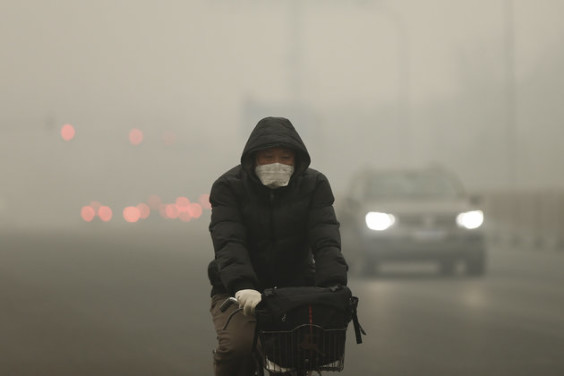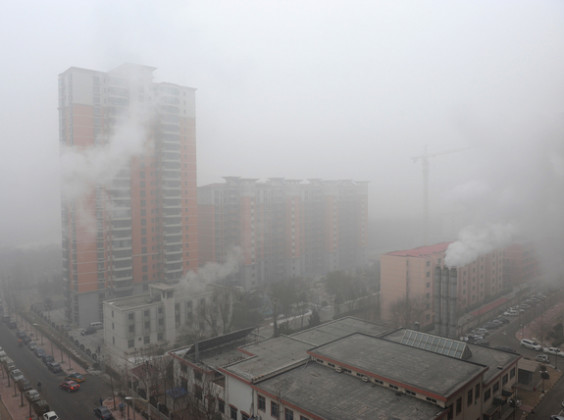Re Ian Bremmer 'Could third-party candidates upend the 2024 US election?' 3 April The current political movement in the USA…
China, energy & environment 2015
Written by Diana Thebaud Nicholson // December 7, 2015 // China // Comments Off on China, energy & environment 2015
China, energy, economy & environment 2004-2013
Dammed, diverted and polluted, China’s rivers have reached their ecological tipping point. China has more large dams than any other country in the world, including the world’s largest – the Three Gorges Dam. Today there are more than 87,000 dams in China. Many of these projects have forced over 23 million people from their homes and land, many of whom are still suffering the impacts of displacement and dislocation. Over 42% of China’s rivers are severely polluted and three quarters of lakes and reserviors are unsuitable for human consumption and fishing. China has paid a big price for hydropower development. Despite the critical state of China’s rivers, the Chinese government has ambitious plans to expand hydropower generation in some of China’s few remaining pristine and high bioviersity value river basins ecosystems in the remote southwest – the Lancang (Mekong), the Nu (Salween), the Yarlung Tsangpo (Brahmaputra), and the Jinsha (upstream of the Three Gorges Dam in the Yangtze River basin).
In 2013, a Coalition of Chinese NGOs released China’s Last Rivers Report, urged the Chinese government to recognize the value of healthy rivers. Since then, new guidance issued by the Chinese government have sought to clarify how environmental and social impacts are to be conducted and assessed. Government discussions around China’s 13th Five Year Plan have also revealed intentions to reduce the cascade of dams on the Nu River from four to two and postpone much of the dam building beyond 2020. International Rivers.org

BEIJING, CHINA – DECEMBER 01: A man rides a bicycle on a day of heavy pollution on December 1, 2015 in Beijing, China. China’s capital and many cities in the northern part of the country recorded the worst smog of the year with air quality devices in some areas unable to read such high levels of pollutants. Levels of PM 2.5, considered the most hazardous, crossed 600 units in Beijing, nearly 25 times the acceptable standard set by the World Health Organization. (Photo by Lintao Zhang/Getty Images)
Beijing Issues First-Ever ‘Red Alert’ Over Air Pollution
(Reuters) – China’s capital on Monday issued its first ever “red alert” for pollution, as the city government warned that Beijing would be shrouded in heavy smog from Tuesday until Thursday.
China’s leadership has vowed to crack down on environmental degradation, including the air pollution that blankets many major cities, following decades of unbridled economic growth.
The move comes as U.N. Secretary-General Ban Ki-moon warned a Paris summit of nearly 200 nations against a “climate catastrophe”, urging governments to reach a strong deal to limit global warming.
In an online statement, the Beijing city government ordered all outdoor construction work to stop on red alert days, besides urging schools to close.
Paris climate talks: Activists urge China to bridge climate divide
As international talks go into final week, Beijing should help overcome differences, activists say
China has been praised for its goal to have carbon emissions peak by 2030.
It has also offered to contribute US$3.1 billion to help other developing nations.
But Beijing still has the potential “to block any issues”, according to Jennifer Morgan, global director of the climate programme at the World Resources Institute.
China’s sea change
As rising water levels along the Guangdong coast threaten to create havoc in its economic heartland, China’s leadership is recognizing the country’s increasing vulnerability to climate change, Nathan VanderKlippe reports
(Globe & Mail) No country on Earth has more people at risk from the sea-level rise than China, where 85 million people live on land that will either be flooded or at risk of inundation in the future, according to an analysis based on a six-metre sea-level rise published in Science this year.
A 900-page Chinese climate science report released recently points to sea levels as one of the chief risks to the country, saying some coastal “cities may even face risks of massive disasters that are hard to forecast.”
And Guangzhou, the capital of Guangdong province, will experience greater losses than any other major global city, the World Bank has warned. … As sea levels rise, the World Bank forecast annual losses of $17.5-billion per year by 2050 for Guangzhou, the highest in dollar terms and, as a percentage of gross domestic product, among the world’s 136 largest coastal cities. Last year, the losses from ocean disasters in Guangdong totalled $1.25-billion, local leaders have said.
14 August
A Bright Spot in US-China Relations: Renewable Energy
By cooperating on renewable energy, the U.S. and China could help each other — and the world.
(The Diplomat) From President Barack Obama’s first visit to Beijing in November 2009, which heralded a new U.S.-China renewable energy partnership, to his most recent visit five years later, featuring an “historic agreement” to reduce carbon emission growth, both sides agree about the need to reduce greenhouse gases. However, even a common goal as well intentioned as saving the planet can be derailed without an understanding of the underlying frictions that have prevented bilateral cooperation between the world’s two largest carbon emitters.
14 May
China’s Energy Security – The Tyranny of Scale
China’s arrival as the world’s largest energy consumer may well help redraw the geostrategic map.
(New America) To begin to parse the potential consequences of this “new system,” it’s important to understand why China has become such an important global energy player in the first place. Ultimately, it’s because of the tyranny of scale: that big population of 1.3 billion requires big economic growth. The results are big, too: while the high growth rates of the last two decades have not benefited the Chinese population evenly, they have lifted an astonishing 600 million people out of poverty.
All of that growth required energy, and, indeed, China’s energy demand has increased more than 500% since 1980. China is now the world’s largest energy consumer and, as of last year, the world’s largest net importer of oil.
3 May
Russian Government Ratifies Huge China Gas Pipeline Deal
(Forbes) President Vladimir Putin ratified a gas supply agreement with China on Saturday that allows for a Siberia pipeline known as the East-Route to supply gas to China. The move is part of Gazprom’s pivot to China which has been amplified since European sectoral sanctions were introduced against Russia last summer because of the Kremlin’s involvement in the Ukraine crisis.
The agreement was passed on April 24 by the lower house of the Russian Parliament and approved by the upper house on April 29.
Putin and Chinese leader Xi Jinping signed a 30-year gas supply contract last May. The pipeline will start providing China with 38 billion cubic meters of natural gas annually starting in 2018.
11 March
China eyes fundamental shift in energy policy
(BBC) China’s growth in coal consumption – just its growth – was not far off the UK’s 1983 total output. In 2013, China consumed an extra 93 million tonnes of the stuff.
That amount – a mountain of the black fuel that would at one time have kept the best part of a quarter of a million British miners in work – represented only a 2.6% increase in China’s seemingly insatiable appetite for coal.
Like Britain, China’s industrial revolution has been coal-powered, but it has been on a scale and speed like nothing else in world history, bringing with it serious environmental implications.
China surpassed the United States to become the biggest emitter of greenhouse gases in 2007 and, if that trajectory is followed, it is well on track to double US emission levels within the next few years.
For anyone, anywhere worried about climate change, China has become the problem, and with the country opening a new coal-fired power station on average every week, it is a problem that has looked likely to simply grow and grow.
Except that the recently released figures for 2014 suggest that something very interesting may now be happening.
Rather than another giant increase in coal consumption, for the first time in 15 years, government data shows that China’s annual coal consumption declined by 2.9%, with an accompanying 1% fall in carbon dioxide emissions. …
China is now the world’s biggest investor in renewable energy, particularly in power generation. In fact, the country has seen more than $400bn (£267bn) invested in clean energy in the past 10 years, and is ranked number one in the world in consultancy EY’s renewable energy country attractiveness index.
2014

China’s Environmental Crisis
(Council on Foreign Relations) China’s environmental crisis is one of the most pressing challenges to emerge from the country’s rapid industrialization. Its economic rise, which has averaged around 10 percent annual GDP growth for the past decade, has come at the expense of its environment and public health. As the world’s largest source of carbon emissions, China is responsible for a third of the planet’s greenhouse gas output and has sixteen of the world’s twenty most polluted cities. Life expectancy in the north has decreased by 5.5 years due to air pollution, and severe water contamination and scarcity have compounded land deterioration problems. Environmental degradation cost the country roughly 9 percent of its gross national income in 2008, according to the World Bank, threatening to undermine the country’s growth and exhausting public patience with the government’s pace of reform. It has also bruised China’s international standing as the country expands its global influence, and endangered its stability as the ruling party faces increasing media scrutiny and public discontent.



